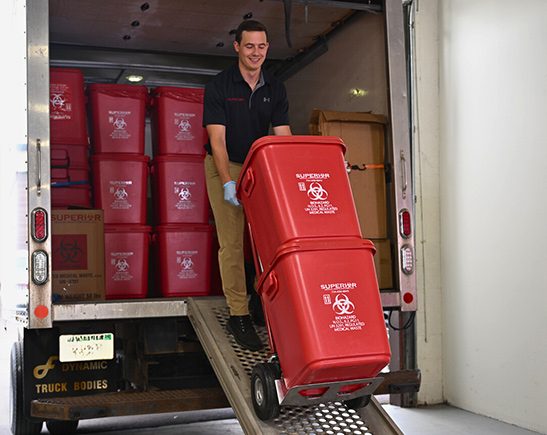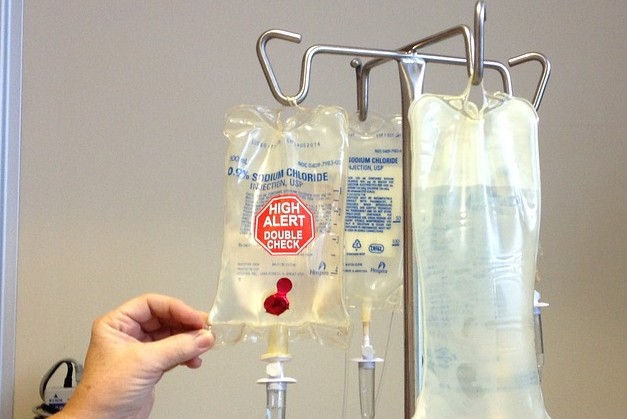Past Cleaning: Ensuring Safety with Professional Medical Waste Removal
The Relevance of Appropriate Medical Garbage Disposal: An Overview for Medical Care Facilities
Appropriate clinical waste disposal is an important element of healthcare center administration, making sure the safety and health of clients, team, and the atmosphere. From comprehending the different classifications of medical waste to conforming with regulative needs, healthcare centers must adopt reliable waste segregation techniques and select appropriate disposal techniques. The importance of appropriate clinical waste disposal goes past plain compliance; it is an obligation that calls for recurring training and education for personnel. In this overview, we will certainly explore the different facets of medical garbage disposal and highlight the crucial steps that healthcare facilities must take. By executing these techniques, healthcare centers can alleviate threats, safeguard public health and wellness, and add to a cleaner, safer atmosphere.
Recognizing Clinical Waste Categories
Recognizing clinical waste classifications is critical for correct disposal in medical care centers. Clinical waste is a broad term that encompasses various kinds of waste created in medical care setups, such as facilities, laboratories, and hospitals. Categorizing medical waste helps ensure that it is taken care of, kept, and disposed of safely and in conformity with relevant guidelines.
There are several groups of clinical waste that health care facilities require to be familiar with. These groups consist of transmittable waste, sharps waste, pharmaceutical waste, chemical waste, and radioactive waste (medical waste disposal services with WasteX). Each classification has details qualities and needs various disposal approaches to reduce the threat of injury to medical care employees, patients, and the environment
Infectious waste, for example, refers to lose polluted with potentially transmittable materials, such as blood, body fluids, and cells. Sharps waste consists of needles, syringes, and various other sharp items that can create injury or transmit infections. Pharmaceutical waste includes expired or unused medicines, while chemical waste is composed of harmful chemicals made use of in medical treatments. Last but not least, contaminated waste consists of materials polluted with radioactive materials, such as nuclear medication products.
Compliance With Regulatory Requirements
Medical care facilities must ensure conformity with governing demands for appropriate medical garbage disposal. Regulative bodies, such as the Epa (EPA) and the Occupational Safety and Health Management (OSHA), have actually established guidelines and policies to guard public health and wellness and the atmosphere. These laws outline the proper handling, storage space, transportation, and disposal of clinical waste.
Compliance with regulatory needs is important for healthcare centers to prevent lawful charges, reputational damages, and prospective injury to human health and wellness and the atmosphere. Failure to abide by these regulations can result in fines, lawsuits, and even the suspension or revocation of running licenses.
To ensure compliance, medical care centers need to establish comprehensive waste monitoring programs that consist of personnel training, appropriate waste partition, and making use of proper containers and tags. Regular audits and examinations must additionally be conducted to determine any type of non-compliance problems and resolve them immediately.
It is necessary for healthcare facilities to keep up to date with modifications in laws and upgrade their waste management methods accordingly. This can be achieved by actively monitoring updates from regulative bodies and joining training programs and workshops.
Applying Effective Waste Partition Practices
To make certain proper clinical garbage disposal, healthcare facilities should apply effective waste segregation practices. Waste segregation is an important action in the total waste management procedure, as it aids decrease the threat of infection, protects against cross-contamination, and ensures the risk-free disposal of various types of waste. Efficient waste segregation practices involve separating medical waste right into various groups based upon its qualities and prospective hazards.
One common practice is the segregation of sharps waste, such as needles and scalpels, from other types of medical waste. Sharps waste should be placed in puncture-resistant containers to avoid injuries and potential infections. Additionally, unsafe waste, such as chemicals and pharmaceuticals, need to be divided from general medical waste to avoid ecological contamination.
Correct labeling and color-coding of waste containers are essential for effective waste partition. Visible and clear tags need to be put on each container to indicate the kind of waste it includes and any special delivery demands - medical waste disposal services with WasteX. In addition, color-coding can be utilized to differentiate in between different waste classifications, making it easier for healthcare staff to dispose and determine of waste appropriately
Normal training and education for health care team is critical for the successful application of waste partition techniques. Team member need to be educated on the various waste categories, proper partition strategies, and the relevance of following waste administration methods. This will certainly aid ensure compliance and consistency in waste segregation methods throughout the center.
Finding Appropriate Disposal Methods
Appropriate selection of appropriate disposal approaches is necessary in ensuring the environmentally responsible and safe management of medical waste in health care facilities. Health care centers create a variety of clinical waste, including sharps, contagious waste, pharmaceutical waste, and chemical waste - medical waste removal services. Each sort of waste calls for details disposal approaches to lessen the danger of contamination, injury, and ecological injury
One typical disposal approach for medical waste is incineration. Incineration involves the regulated burning of waste at high temperatures.

Chemical disinfection is one more approach made use medical waste disposal services with WasteX of for sure sorts of medical waste, such as pharmaceutical waste. This approach uses chemicals to counteract or destroy impurities. It is vital to select chemicals that are secure and eco friendly.
Sometimes, garbage dump disposal may be suitable for non-hazardous medical waste (medical waste disposal services with WasteX). Proper partition and product packaging are essential to avoid leakage or contamination.
Eventually, healthcare facilities must meticulously review the attributes of their clinical waste and select ideal disposal methods that focus on safety, environmental protection, and regulative compliance. Routine training and tracking are vital to make certain that medical care team complies with appropriate disposal protocols.

Training and Educating Staff on Proper Disposal Treatments
Personnel education and learning and training play a critical duty in making certain the proper disposal of medical waste in medical care centers. It is necessary that all personnel, including medical professionals, nurses, service technicians, and assistance personnel, receive extensive training on appropriate disposal procedures. This training ought to cover the different kinds of medical waste, their prospective risks, and the suitable methods for taking care of, setting apart, and getting rid of them.
One of the main objectives of staff education and learning and training is to guarantee that all healthcare experts understand the relevance of proper disposal treatments and the potential consequences of inappropriate waste monitoring. They need to be mindful of the dangers connected with clinical waste, such as the transmission of infections and the contamination of the setting. websites medical waste removal services. By comprehending these dangers, staff participants will certainly be extra determined to follow appropriate disposal procedures and take the necessary precautions to protect themselves, their associates, and the neighborhood
Training ought to also cover making use of individual safety devices (PPE) and the appropriate techniques for dealing with clinical waste. Employee should be informed on just how to identify and segregate different sorts of waste, such as sharps, transmittable waste, and dangerous chemicals. They must additionally be educated on the appropriate usage of waste containers, such as sharps containers and biohazard bags, along with the relevance of labeling and securing these containers correctly.
Furthermore, staff education and learning and training need to include regular updates and correspondence course to make sure that health care specialists stay educated about the most recent laws medical waste disposal services with WasteX and finest practices in medical waste disposal. This ongoing education is vital to maintain a high degree of recognition and conformity amongst personnel.
Conclusion
In verdict, appropriate clinical waste disposal is of utmost relevance for health care centers. Recognizing the various classifications of clinical waste and complying with regulative requirements makes certain the security and well-being of both healthcare employees and the basic public.
From recognizing the different groups of clinical waste to conforming with governing demands, medical care facilities need to take on effective waste segregation techniques and choose appropriate disposal techniques. These categories include infectious waste, sharps waste, pharmaceutical waste, chemical waste, and radioactive waste.To make certain proper clinical waste disposal, healthcare facilities should apply effective waste segregation practices. Waste partition is an essential step in the overall waste administration procedure, as it assists minimize the threat of infection, prevents cross-contamination, and makes sure the secure disposal of different kinds of waste. Medical care facilities produce a range of clinical waste, consisting of sharps, contagious waste, pharmaceutical waste, and chemical waste.